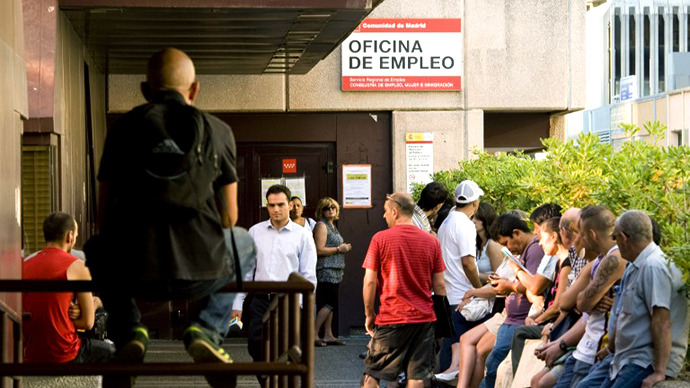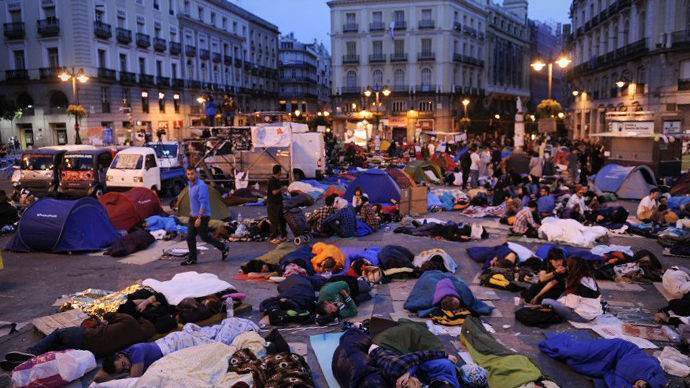Eurozone unemployment hits record-high 11.9%

Unemployment has hit unprecedented levels across Europe, with youth joblessness particularly high, according to a new EU report. Spain was hardest-hit: Overall unemployment was measured at over 20 percent, and youth joblessness was over 55 percent.
The number of those out of work in the eurozone spiked to 11.9 percent in January, up from 11.8 percent the previous month – a marked rise from the previous year. In January 2012, it stood at 10.8 percent; nearly 19 million people are now out of work across the eurozone.
The EU27 unemployment rate also collectively rose, standing at 10.8 percent, a rise from 10.7 percent in the previous month. Some 26.2 million are now jobless across Europe, according to figures released in a new Eurostat report made public on Friday.
The highest unemployment rate – 26.2 percent – was in Spain, which has recently seen mass anti-austerity protests, some of which have turned violent. The report did not provide updated figures for Greece, but as of November, 27 percent of Greek workers are jobless.
Large decreases in joblessness were seen in Estonia (11.1 percent to 9.9 percent between December 2011 and December 2012), Latvia, Romania and the UK, while the overall lowest unemployment rates were Austria at 4.9 percent, Germany and Luxembourg at 5.3 percent each, and the Netherlands at 6 percent. Denmark’s jobless rate remained unchanged.

Wide-scale youth unemployment
Levels of youth unemployment Europe-wide are also at record levels: The youth jobless rate in hard-hit Spain was the highest-ever at 55.5 percent.
Overall, youth unemployment stood at 23.6 percent in the EU27 – meaning 5.732 million young workers are unemployed – compared to 24.2 percent in January 2012. In the euro area, youth joblessness rose from 21.9 percent to 22.4 percent, (3.642 million). Economic woes in Greece, Spain and Italy contributed heavily to these figures.
Regional labor ministers warned earlier this week that action needs to be taken, as joblessness among the under-25s could potentially threaten the European Union as an institution.
“Europe needs the courage to respond to the major financial and economic crisis that it is experiencing with social and employment policies that make a real change to people's working and living conditions,” the paper said, which was circulated in Brussels earlier this week, according to Reuters.
The rate of price increases across the eurozone dropped to 1.8 percent in February, placing it below the European Central Bank's target inflation rate for the first time in more than two years. Inflation stood at 2.0 percent, according to Eurostat, and hasn’t been below this level since last November.
Low inflation is usually considered a positive sign, meaning price pressures are contained. However, it can also be reflective of the state of consumer demand, which frequently falls during periods of high unemployment. Europeans are spending less and saving more, as they are likely concerned for their job security.















